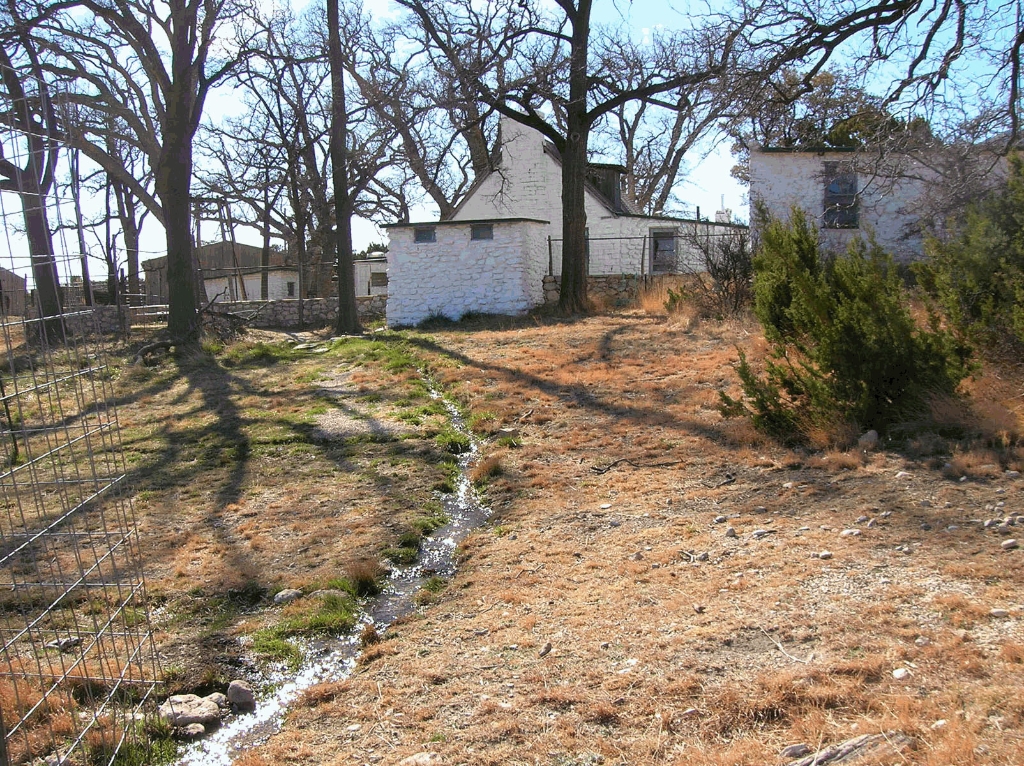
John T. Smith and family began to develop Frijole Ranch in 1906, transforming the property into a productive, self-sustaining family farmstead and ranching operation. Soon after their arrival, they planted an orchard adjacent to the house. The orchard would evolve as they experimented with different varieties and techniques, continuing to provide the family with a source of food and shade in the remote area of the Chihuahuan desert.
The orchard was enclosed by a stacked stone cobble wall with a wooden fence along the top to protect the trees from grazing livestock. An irrigation system of troughs and ditches diverted spring water to the orchard trees, and manure from their cows provided fertilizer.The Smiths grew several varieties of apple, including Red Delicious, Golden Delicious, Winesap, Royal Gala, crab apples, along with pear, wild cherry, peaches, plums, and apricots. Smith even cultivated lemon and orange trees. The area under the orchard trees was planted with alfalfa, which was cut using scythes and stored in the barn to feed livestock. There is also evidence that Smith experimented with grafting techniques.
When the Smiths sold the ranch, it changed from functioning as a single-family farmstead to part of a large, commercial ranching operation. During this period (1941-1969), when Frijole Ranch continued to serve as a single-family residence for the ranch foreman and as ranch headquarters, the orchard continued to be used. However, residents did not rely on the fruit in the same way, and as a result the trees were not maintained.
The 1994 Cultural Landscape Report (CLR) recommended that the orchard be rehabilitated by reintroducing fruit trees, maintaining historic organization, and incorporating historic management techniques. At that time, only a single apple tree remained from the Smith’s orchard. In February of 2006, a century after the Smiths settled at Frijole Ranch, the orchard was partially replanted. The work was undertaken by 13 Eagle Scouts who planted apple, pear, and cherry trees and addressed improvements to soil and irrigation. The replanting incorporated oral history, the CLR treatment plan, interviews with nurseries about historic fruit trees, and about 60 hours of time by the group. While there have been several tree replacements since then due to the impacts of wildlife, the trees continue to be an important part of understanding the ranch landscape.
Is there something we missed for this itinerary?
Itineraries across USA


















































